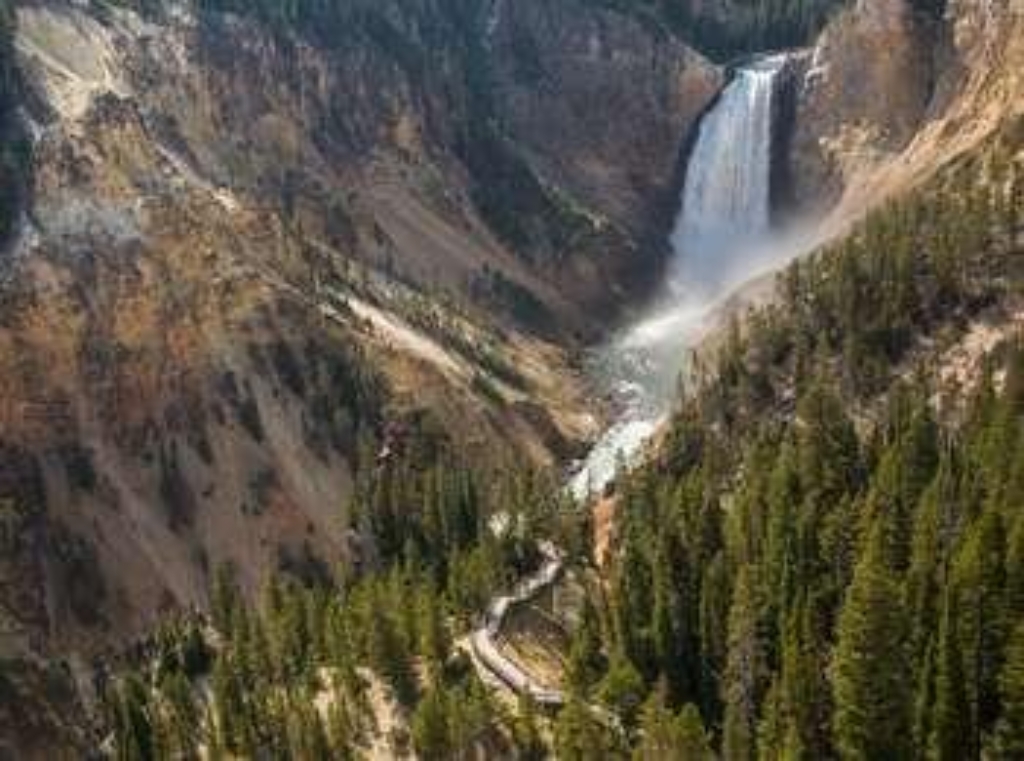
Scientists think the oldest Grand Canyon of the Yellowstone formed in rock and sediments about 160,000 to 140,000 years ago. This canyon was not as deep, wide, or long as today’s canyon.
Past and current hydrothermal activity altered and weakened the rhyolite, making the rocks softer. The Yellowstone River eroded these weakened rocks to deepen and widen the canyon, a process that continues today. The current canyon begins at the Lower Falls and ends at Tower Fall.
North Rim Trail
Trails and walkways wind along the rims and into the canyon. A trail guide with map and information is available.
The Role of Erosion
The Lower Falls may have formed because the river flows over volcanic rock more resistant to erosion than the downstream rocks, which are hydrothermally altered.
The Upper Falls flows over similar rocks. The large rocks upstream from the Upper Falls are remnants of a lava flow resistant to erosion.
Puffs of steam mark hydrothermal features in the canyon’s walls. Their activity, along with water, wind, and earthquakes, continue to sculpt the canyon.
Scientists continue to develop theories about the formation of the Grand Canyon of the Yellowstone.
Colors
The colors are caused by oxidation of iron compounds in the rhyolite rock, which has been hydrothermally altered ("cooked").
The colors indicate the presence or absence of water in the individual iron compounds and hydration of minerals in the rock.
Most of the yellows in the canyon result from iron and sulfur in the rock.
Dark orange, brown, and green areas near the river are still active hydrothermal features.
Think Safety, Act Safely
From burning hot hydrothermal features, to unpredictable wildlife, to steep terrain, Yellowstone is a dangerous place. You are responsible for your safety. As such, please remember these safety tips:
- Never touch any hydrothermal waters—they can scald you.
- Observe safe distances from all wildlife.
- Stay behind fencing, guard rails, and ledges.
- Use caution when around park waters—they are cold and fast.
- Show patience and courtesy to other people.
Is there something we missed for this itinerary?
Itineraries across USA


















































